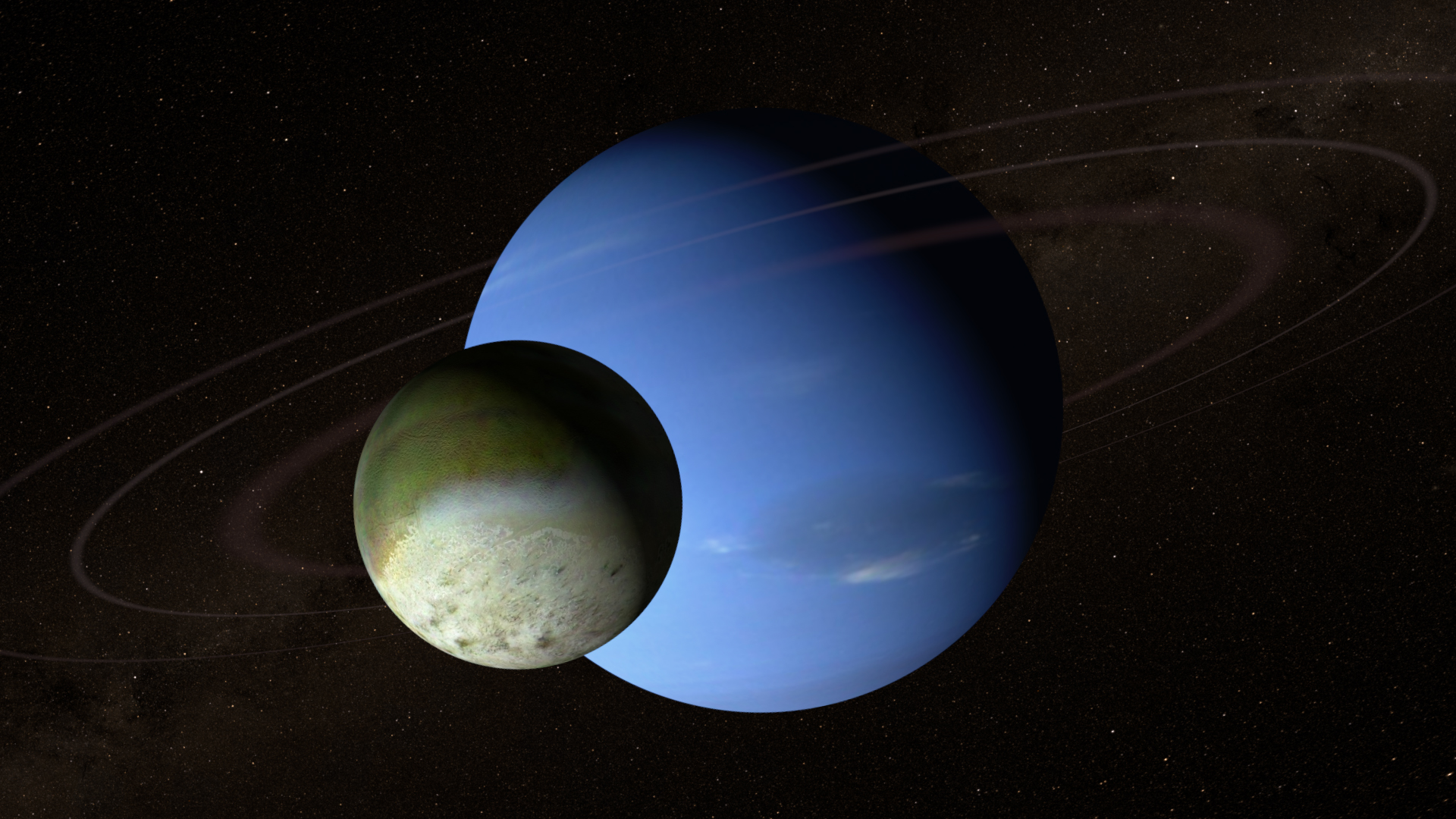Kepler Stares at Neptune
In late 2014 and early 2015, NASA's Kepler telescope observed the eighth planet in our solar system, Neptune. Kepler detected Neptune's daily rotation, the movement of clouds, and even minute changes in the sun's brightness, paving the way for future studies of weather and climate beyond our solar system. Complete transcript available.
Watch this video on the NASA Goddard YouTube channel.
Music Provided by Killer Tracks:
"Lost Contact" – Adam Salkeld & Neil Pollard
"Processing Thoughts" – Theo Golding
The Kepler spacecraft, launched in March of 2009, is a telescope designed to search for exoplanets, planets orbiting stars other than our sun. It does this by continuously measuring the brightness of over 100,000 stars, waiting for momentary dimming that might indicate a planet has crossed in front of its host star. Scientists can infer the size and orbital period of an exoplanet from the depth and frequency of such dips in the star's light curve.
For the first four years of the mission, Kepler stared at a single 12° patch of the sky between the bright stars Deneb, in the constellation Cygnus, and Vega, in Lyra, where it found several thousand exoplanet candidates. But when the second of the spacecraft's four reaction wheels failed in 2013, Kepler was no longer able to point accurately at its original target, so scientists devised a new way to point the spacecraft using the remaining two reaction wheels and photon pressure from sunlight. The new mission was dubbed K2.
Because of the new pointing method, K2 is limited to looking at fields along the plane of our solar system, but this also offers new ways to use the telescope's sensitive detectors. From November 2014 to January 2015, Kepler's field included the planet Neptune. Amy Simon, a planetary scientist at NASA’s Goddard Space Flight Center, looked for the faint signal of moving clouds embedded within Neptune's light curve. The Kepler observations are unique,
said Simon, because they allow us to see the light curve of an object close enough to image and resolve cloud features. These observations prove that rapid variations in light curves of brown dwarfs and exoplanets can be caused by changing clouds.
Kepler is in an Earth-trailing heliocentric orbit, which just means that it's in orbit around the Sun and lagging behind the Earth, falling behind at the rate of 7.3 days per year. At the time of the Neptune observations, the spacecraft was trailing the Earth by about 6 weeks, or a little over 100 million kilometers. From this orbit, the K2 mission has identified hundreds of new exoplanet candidates.
Beginning with a view from above the inner solar system that shows Kepler's orbit, the camera flies to Kepler and then looks along the Kepler telescope's line of sight. Zooming into the Kepler field reveals Neptune and some of its moons.
Beginning tight on Kepler's view of Neptune, the animation zooms out to reveal Kepler's entire field, then its orbit.
This artist's concept animation begins with a flyby of the icy moon Triton, then proceeds toward Neptune. Planetary textures are based on Voyager 2 imagery.

Kepler recorded Neptune's brightness for several months, detecting small periodic changes that researchers used to study the planet.
For More Information
Credits
Please give credit for this item to:
NASA's Scientific Visualization Studio
-
Visualizer
- Ernie Wright (USRA)
-
Producer
- Dan Gallagher (KBR Wyle Services, LLC)
-
Scientist
- Amy A. Simon (NASA/GSFC)
-
Narrator
- Dan Gallagher (KBR Wyle Services, LLC)
-
Support
- Elizabeth Zubritsky (ADNET Systems, Inc.)
-
Public affairs officers
- Nancy Neal-Jones (NASA/GSFC)
- Michele Johnson (NASA/ARC)
-
Graphics
- Scott Wiessinger (USRA)
-
Astrophotographer
- Tunç Tezel (The World at Night)
-
Image processing
- Paul Schenk (Lunar and Planetary Institute)
- Björn Jónsson (The Planetary Society)
Release date
This page was originally published on Thursday, April 27, 2017.
This page was last updated on Tuesday, January 2, 2024 at 10:36 AM EST.
Missions
This visualization is related to the following missions:Series
This visualization can be found in the following series:Papers used in this visualization
A. Simon et al., Neptune's Dynamic Atmosphere from Kepler K2 Observations: Implications for Brown Dwarf Light Curve Analyses,
The Astrophysical Journal, 817:162 (Feb 1, 2016)
Datasets used in this visualization
-
UCAC3 (Catalog) [U.S. Naval Observatory: Third CCD Astrograph]
ID: 724 -
DE421 (JPL DE421)
ID: 752Planetary ephemerides
This dataset can be found at: http://ssd.jpl.nasa.gov/?ephemerides#planets
See all pages that use this dataset -
[Kepler]
ID: 807This dataset can be found at: http://kepler.nasa.gov/Mission/discoveries
See all pages that use this dataset
Note: While we identify the data sets used in these visualizations, we do not store any further details, nor the data sets themselves on our site.
![Watch this video on the NASA Goddard YouTube channel.Music credit: "Struggling in the City" by Emre Ramazanoglu [PRS], Jamie Michael Bradley Reddington [PRS], and Patrick Green [PRS]; Atmosphere Music Ltd [PRS]; BLOCK; Killer Tracks Production Music](/vis/a010000/a012800/a012862/Hubble_Neptune_thumbnail.png)
